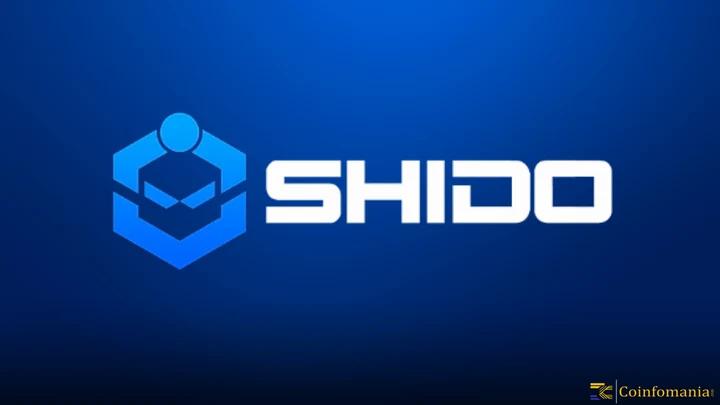Shido’s Enso Upgrade Secures Approval, Set for May 27 Rollout
Dive into the technical details of the Shido Network’s Enso Upgrade, including faster block finality, improved consensus, and ecosystem scaling.

Quick Take
Summary is AI generated, newsroom reviewed.
The Enso Upgrade introduces faster transactions, lower gas costs, and improved cross-chain security features.
Enso adds a burn mechanism that reduces the token supply based on network usage.
The update includes developer-focused improvements to simplify dApp building and ecosystem scaling.
In a May 26 X post, Shido Network revealed that its Enso Upgrade proposal has been approved for the mainnet. The upgrade will activate at block height 16,850,000 on May 27 at about 15:55 UTC. This upgrade marks a key step toward improving network performance, security, and scalability. A structured timeline guided development, starting with a testnet phase in March of this year. Extensive community testing in April and staggered validator upgrades prepared the mainnet rollout phase. Network participants and developers have awaited this change to support increased demand and higher reliability.
Enso Upgrade Enhances Shido’s Performance and Transaction Capacity
The Enso Upgrade includes several technical updates designed to streamline network operations and performance. Block finality now targets under one second, which helps secure transactions more rapidly and enhances validation throughput. Transaction capacity increases by thirty percent, boosting throughput to approximately thirteen thousand transactions per second. These changes support on-chain trading, decentralized applications, and cross-chain asset transfers within the network. Developers will find reduced latency when building, testing, and deploying new applications on Shido Network. Validators have upgraded their nodes to implement these enhancements smoothly, ensuring reliable network performance.
A major upgrade effect is lower Shido gas consumption for EVM-based transactions and smart contracts. A new state pruning mechanism cuts storage needs by roughly forty percent across chain data. The Shido PoS Consensus version two update improves validator selection and network resilience during disruptions. These combined optimizations result in a projected thirty percent reduction in Shido gas consumption for users. Lower fees may encourage greater network usage and more frequent contract and application deployments. These cost savings could significantly improve experiences for traders and decentralized application users alike.
Strengthening Network Reliability and Developer Tools
Security enhancements focus on strengthening the Inter-Blockchain Communication protocol safeguards for cross-chain transfers. IBC version eight point seven point zero adds resilience against partition and data integrity issues. These updates protect user funds and ensure reliable asset transfers between compatible blockchains. Improved partition resistance helps maintain network operations during unexpected disruptions and congestion events. Protocol updates aim to reduce potential threats and enhance overall network reliability and resilience. Users engaging in cross-chain operations will benefit from these new protective measures and safeguards.
Updates to the WasmVM and Cosmos SDK versions aim to improve developer experiences on the network. These enhancements simplify onboarding for new projects and integrations, building on Shido Network. More than one hundred active projects already utilize the network’s updated infrastructure and tools. Twelve native decentralized applications benefit directly from improved runtime stability and overall performance. Tooling updates will help developers monitor, debug, and optimize applications more effectively. Ecosystem support initiatives focus on long-term growth and sustainable network participation by all stakeholders.
New Token Burn Mechanism Adjusts Supply Based on Network Activity
A new token burn mechanism automatically triggers when network activity increases beyond defined thresholds. This feature reduces the circulating supply to manage inflationary pressures and promote token scarcity over time. Higher usage leads to more token burns, creating a deflationary dynamic on the network. This mechanism aims to impact token availability without guaranteeing any specific price increases over time. Market factors and user behavior will still drive long-term token value and economic outcomes. Users and stakeholders should monitor burn rates over time to understand potential supply shifts.
Mainnet Activation Marks a Critical Phase for Shido
Shido stakeholders will observe upgrade performance closely next week once mainnet activation is complete. Real-world testing will reveal network strengths and areas needing future refinement or updates. Ongoing community feedback remains vital to guide subsequent protocol developments and network improvements. The Enso Upgrade proposal sets a foundation for future network scaling and innovation. Developers, validators, and users should track performance metrics closely for informed operational decisions. The success of this upgrade will influence Shido Network’s reputation and future user adoption.
On June 4, Bjorn Bonnevier, the founder and CEO of Shido, provided an update on the aftermath of the Enso upgrade in an X post. He mentioned that the Shido Network has now surpassed 20,000 active on-chain accounts, reflecting its highest level of sustained usage to date. Bjorn addded the Enso mainnet upgrade is live and currently undergoing its final calibration phase. This includes adjusting gas targets, fee curves, and consensus limits. He ended the tweet saying: “Once tuning is complete, the full performance profile will be available for developers and end-users alike.”
Follow us on Google News
Get the latest crypto insights and updates.


